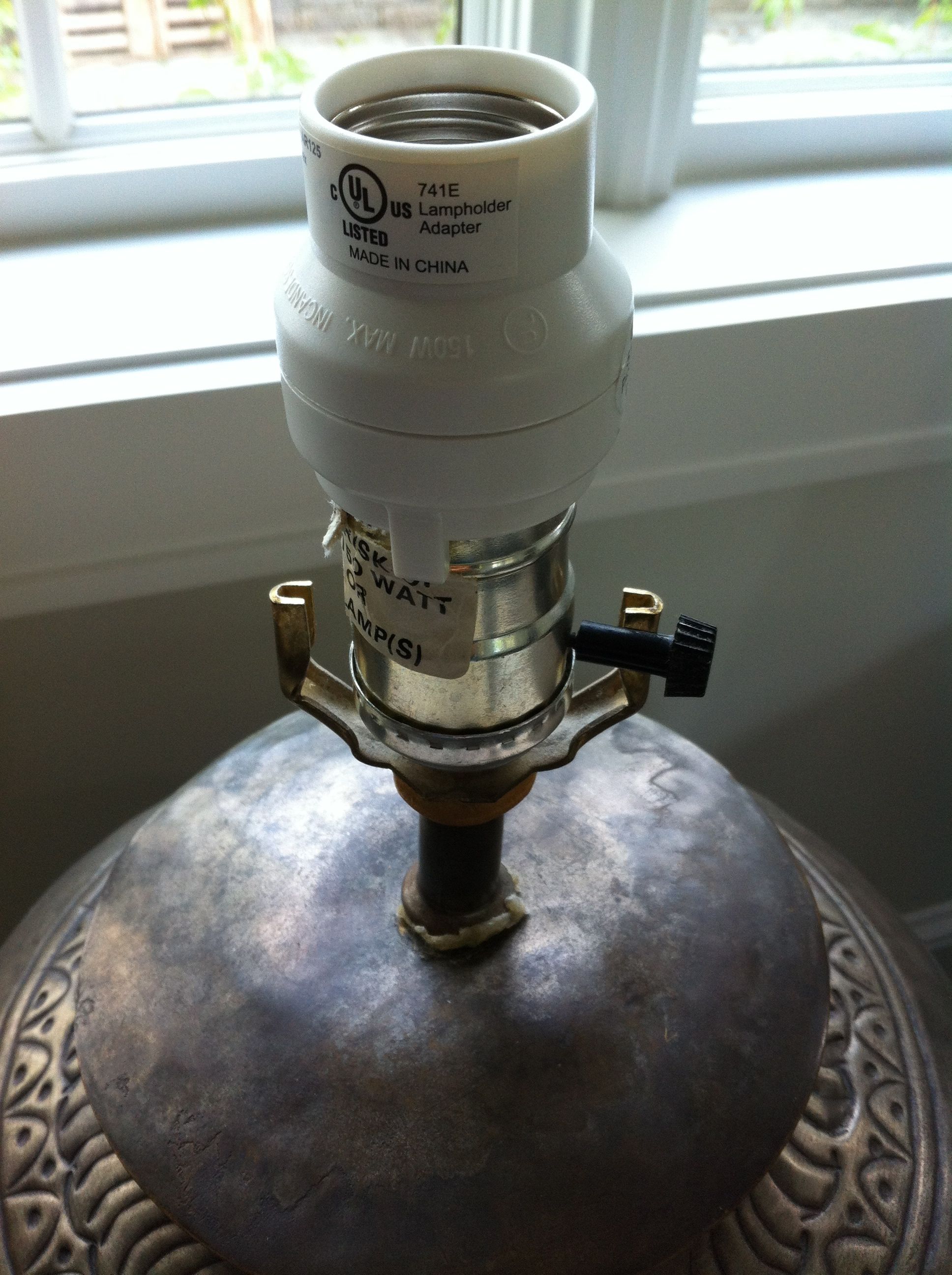by Karen Keller Capuciati
I came across a terrific idea the other day while scanning through Parkinson’s Disease: 300 Tips For Making Life Easier, by Shelley Peterman Schwarz: “Purchase touch-sensitive lamps if manipulating the small turn-screw on most lamps is difficult. Touch any metal on the lamp base and the light goes on; touch it a second time and the light goes off.”
A good tip, I thought. Not only can the switch itself be difficult to turn, but getting to it often requires bending down to reach under the lampshade, which could throw an unsteady person off balance and possibly cause a fall.
This is also a good idea for people with arthritis, vision impairment, cognitive disabilities or anyone assessed as a fall risk. Our dad, for example, had rheumatoid arthritis and this would have been a nice convenience for him.
But instead of buying new touch-sensitive lamps, I set out to find out how easy it would be to adjust the lamps in our home in a similar fashion, and I discovered it couldn’t be simpler. Here are three small, low-cost options to make your own lamps easier to operate.
Touch Adaptor
This gadget allows you to turn on, off, brighten or dim a metal lamp by a simple touch. It’s inexpensive and easy to install. A couple of considerations: it only works with a metal lamp, and the addition of the 2-inch adaptor reduces the bulb space created by a traditional lampshade bracket. A lampshade that clips onto the bulb, or a bracket that sits at the base of the light bulb, as shown below, eliminates that issue.

Plug in lamp, turn lamp switch to ON. Wait 30 seconds and touch metal lamp to turn light on and off.
Wireless Remote and Plug-In Receiver
Perhaps you don’t have a metal lamp. In that case, I suggest the Westek brand wireless remote, only $15. Plug the lamp into the small (2” x 4”) receiver, attach it to the wall next to the outlet, and the pocket-sized remote control turns your lamp on and off. This has the same basic benefit as the touch-sensitive lamp, but the added advantage of remote access. It provides light control to an elder who may be unable to leave his/her bed or chair, allowing control of the lamp from across the room. This remote can be attached to a key chain for quick access and permits someone to quickly and easily turn on a light when entering the home. The one drawback to this product is the possibility of misplacing the small remote.
Motion-Sensing Light Socket
Another option is a motion sensor. You merely screw this sensor into an overhead light and then the bulb into motion sensor. This creates a light that will turn on, and stay on, when it senses movement, and then turn off minutes after you leave the room. This is a great safety feature for people who wander at night. Consider placing it in stairways, bathrooms, kitchens — anywhere someone could get hurt or where light switches are hard to find or reach. It cost $35 at my hardware store, which may be a little steeper but you never have to turn on another light. One consideration: the sensor naturally needs to be exposed to sense motion, and the light bulb is left bare which may be aesthetically unappealing.
These are three simple-to-install, inexpensive options to enhance home comfort and safety. There are other options, too. You could hardwire lamps to be touch-sensitive; install rocker or motion-detector switches on the wall for overhead lights; or even use light-sensitive night lights. We would be curious to hear what gadgets you’ve found to make life easier in the home for your elder loved one.
Karen Keller Capuciati is the Co-Founder of In Care of Dad.














